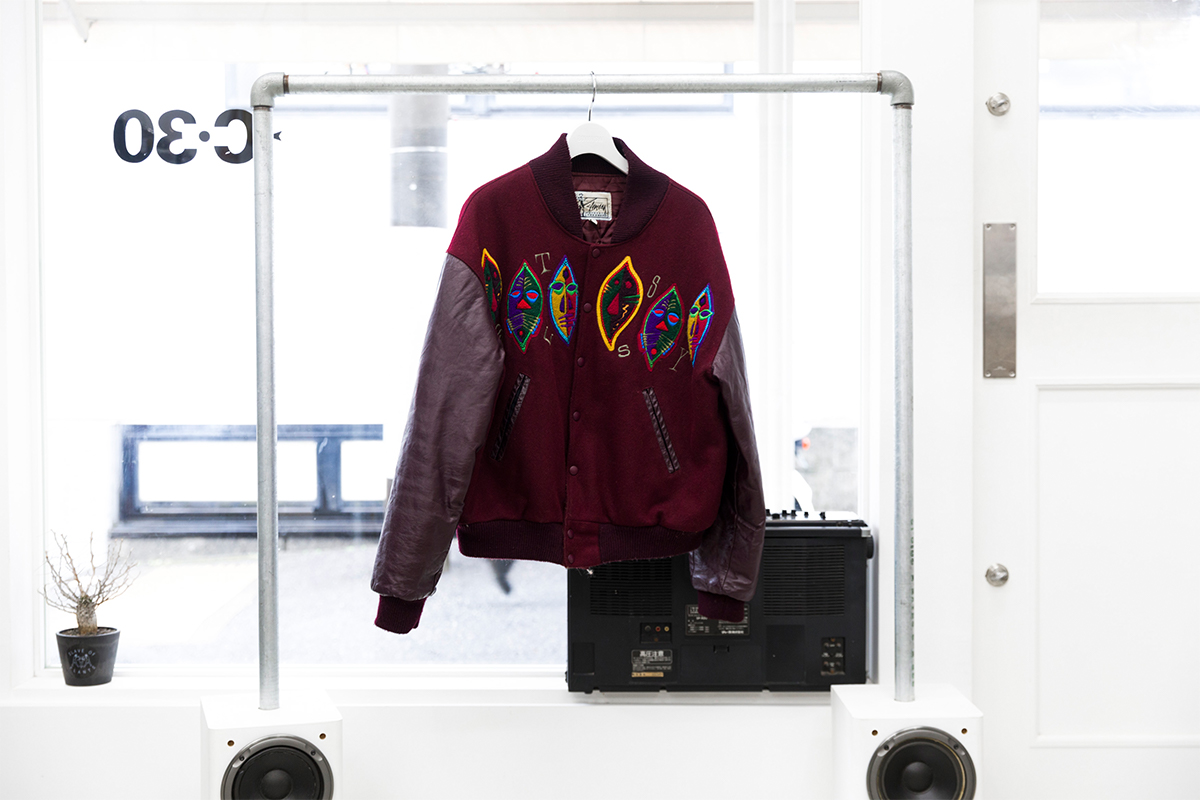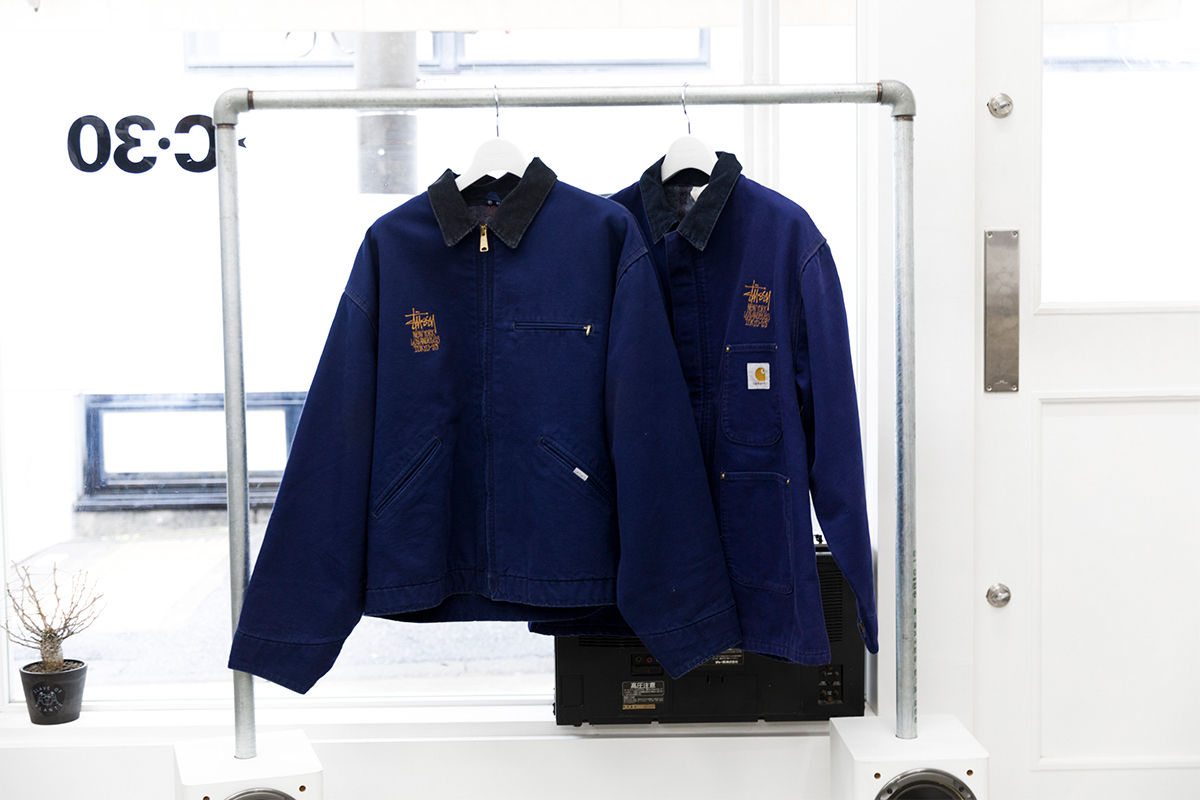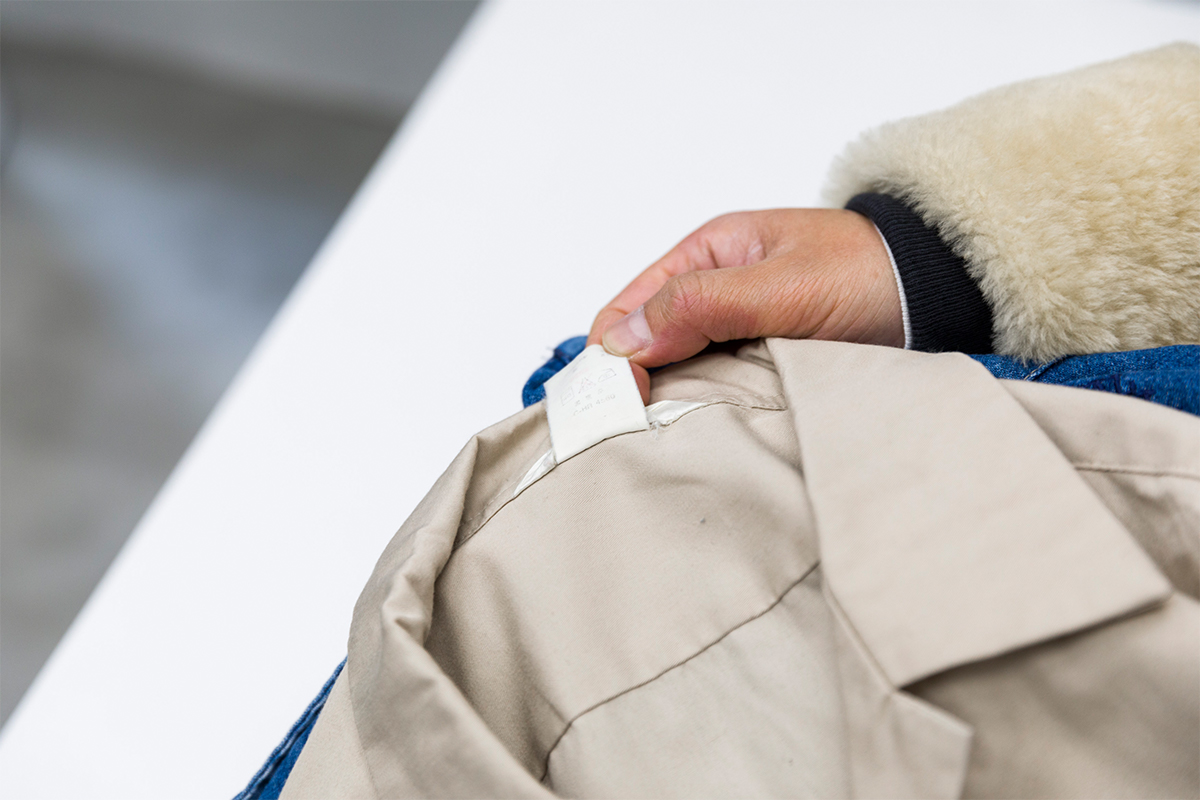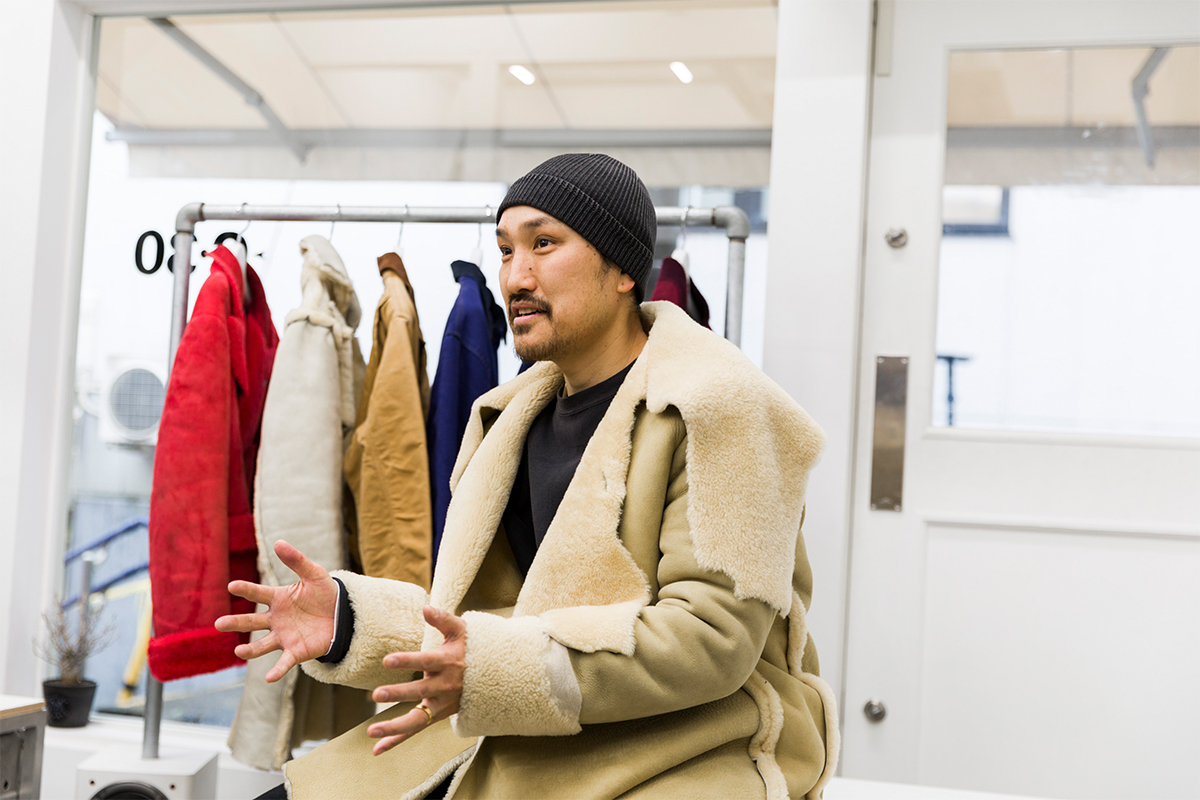TALKING ABOUT ARCHIVES Vol.18
Motofumi “POGGY” Kogi talks the relationship between archive and fashion; vol. 02, feat. Ken’ichi Gonmori (BOW WOW) (Part 2 of 2)
From high fashion to street fashion, the archive is a concept that cannot be left out when talking about fashion. What effect does the archive have on the creations made by each brand? In this new project, we will be joined by Ogi “Poggy” Motofumi and follow his dialogues with each guest. For this second instalment, our guest is Gonmori Ken’ichi, who after many years of working in the second hand fashion industry started his own brand, BOW WOW. This interview was conducted in his flagstore, C30, and brought directly to you.

Gonmori: “One of the amazing things about Hiroshi Fujiwara is the way he was so cool about the way he was introducing imported items and magazines. To give an easy example, he would just show up wearing John Smedley. I think one of the brands that entered Japan and became a normal part of fashion culture here most easily was STUSSY. I brought a Sukajan with a Zulu mask print on it, which you will probably not have seen before.”
--- This is the first time seeing this tag. What period is this item from?
Gonmori: “This was made in 1990; this tag was only used in the period between the late eighties and early nineties.”
--- How did people view STUSSY at the time?
Gonmori: “I started being interested in them in the mid-nineties, so I was already slightly behind at the time. I was able to catch up right about when they sent out their items with white tags, but by then they were already being introduced in Boon all the time, and were way more expensive than they are now, they were like the item you wanted but couldn’t afford.”
Poggy: “Also, the older STUSSY designs starting being revalued around because of the arrival of Dior.”

--- What do you think is the lasting appeal of a brand like STUSSY? Is there some kind of red thread, an idea behind all their items?
Gonmori: “To me, the founder of STUSSY, Shawn Stussy himself, is on the same level as brands like Futura. It always has been. It’s also the font of the letters. At the moment the brand is still being put on the shelves as fashion, but looking at the way Dior has been treated, I think it would be interesting to look at it from an art perspective as well. I think that’s the interesting thing about their clothing, what makes it cool. The balance of the respective sizes can be odd as well, and the shapes are sublime. But have you seen their sunglasses? The ones from the eighties? The ones personally made by Shawn. Some of them, like “Michael” and “Naomi” were hit models in the nineties, but if you look into it there’s also some from before that time; I own a few of these models, but the quality is amazing. I’ve had some jobs in making sunglasses as well before so it should be easy to understand, but these, I don’t even known where to get started. They were all made in different countries as well. It’s like he was travelling across the globe to find a good place to make them. I feel he was a very active person in trying to create new things.”
--- Poggy, could you share with us your take on Shawn Stussy and STUSSY as a brand?
Poggy: “STUSSY to me is kind of similar like Malcom McLaren; Shawn Stussy would wear his own items mixed with things like Comme des Garcons, so it wasn’t just a surf brand, there was a kind of elegance to his items as well. If you watch the older STUSSY commercials, there would be times he would be wearing a suit; I love that feeling of tradness included in the package. Also, the fact that he called his store CHAPT, or that he would create a crew from all over the world, Hiroshi Fujiwara from Tokyo, SLAM JAM from Italy, GIMME FIVE from London, it felt like a wave was occurring all over the world which was amazing. All of these people are still working as designers, y’know? From GIMME FIVE, another brand called KIM JONES was born, that feeling of the period being handed down to the next generation was great as well.”
--- What period are the STUSSY items from you have in your collection, Mr. Gonmori?
Gonmori: “I personally want to collect items from the early eighties when the brand had just started, but generally anything from the eighties would be nice to have! Then again, there’s a lot of masterpieces from the late nineties, and I think the items being made today are great as well…”

Poggy: “Now this one I’d love to have!”
Gonmori: “People like NIGO and Hiroshi Fujiwara were introducing these items back then as well, like this collaboration piece with Carhartt sold in New York in 1991. These days there’s loads of items with the Shawn font embroidered into it, but this is the absolute first one.”
Poggy: “So the collaboration with Tommy Boy came after this?”
Gonmori: “Yes, that one came late. I think the Tommy Boy logo for that was also drawn by Haze. On top of that, Shawn Stussy himself wrote the letters, so it’s an amazing collaboration in that sense as well.”
--- The embroidery on this only has NEW YORK, LOS ANGELES and TOKYO, does that mean that at the time there were only stores in those three places?
Gonmori: “It seems like it. Those were the places where there was a Chapt store. With the same embroidery, there’s a collection with decoration on premade T-shirts which has a Special Edition mark on it as well.”


--- I’ve never seen that before! Were these sold just like that back in the day?
Gonmori: “That’s what I heard. But it’s pretty unclear what kind of items there are. We only know there’s several different kinds.”
Poggy: “Do you have any plans of getting rid of these any time soon?”
Gonmori: “Huh?”
Poggy: “I remember hearing he did some embroidery on Japanese workwear as well. Stussy, I mean. I got influenced by him back then as well and did some embroidery of my own, writing with 2G on a pair of workpants from Toraichi”
Gonmori: “Really! I totally understand wanting to do that. I bought a pair of those pants before, and seeing it made me feel the same way. That was a thing that Hiroshi Fujiwara and those people also did, customizing second-hand items by embroidering onto them. I used to do that as well, with my own brand. As far as STUSSY goes, I tend to promote older items in the store as well. I keep saying they might be the next thing this year.”

Gonmori: “The items I brought today are all in someway connected to either my store or the brand I’m running. This Spring/Summer season, I will be launching a new brand called RECOGNIZE together with MURO, which has vibes similar to this jacket. I think it was formed between ideas from the store that MURO used to run called SAVAGE and this triple jacket by HAZE and Carhartt as well as the items made by STUSSY and Tommy Boy, it’s all connected in this jacket designed for Carhartt by HAZE. There’s the SAVAGE logo and the design by HAZE; the HAZE logo embroidered at the front was done so in his own writing. This is a jacket that MURO released when he celebrated his 20th anniversary of dubbing mixtapes. The sign was written by HAZE when he was doing an exhibition organized by HUF.

--- Maybe we could go so far as to say that the archive items of the time are your driving force for making items for BOW WOW.
Gonmori: “That’s definitely true! I think all designers at some point think the same way, although they might be exceptions. Even people like Karl Lagerfeld, Hedi Sliman, at least from the stories I hear from abroad, would have been buying clothes at the same stores, so they too would be looking for inspiration in second-hand wear. That’s why I named my company DITC (short for Diggin In The Crates)”
--- That sounds amazing!
Gonmori: “I had decided on that name before I actually met MURO, but I loved his work that much even back then. Diggin in The Crates, like the name suggests, stands for getting your hands dirty and going places to personally dig up special items, but it also means we basically do anything. In other words, yes, second-hand clothing provides the energy needed to make new clothing as well.”
--- Poggy, how do you feel about BOW WOW using these archive items as an inspiration for their new items like Mr. Gonmori has been telling us today?
Poggy: “Like I said before, there’s examples of people blatantly sampling items, while there’s also items that are totally different from anything that came before. But for the brand, I really love the feeling of balance they have managed to find between the new and the culture that it originated from.”

Poggy: “But man, HAZE is just crazy cool, isn’t it?”
Gonmori: “You’re right there! I really want it to become even more popular over in Japan.”
Poggy: “The first time I met HAZE was at the beginning of the millennium, when SHIPS was doing this solo exhibition called DIGS. At the time, I was wearing a Margiela piece with the body made of leather and the arms made of brown-colored knit wool, and I asked him to sign on that. But I ended up having to sell that item because I had no money… By this point in time, I’m regretting that decision dearly. In high school, I also had a T-shirt with the Batman logo and HAZE written on it. The logo for PUBLIC ENEMEY was also designed by HAZE but finished up by CHUCK D. Afterwards, I’d meet him in Brooklyn, and last month on the sixteenth we met at a show. I still feel the people who ended up going solo from HAZE are amazing. But man, what I would give to get that Margiela knit sweater back! Please do warn me if you find it for sale somewhere!”
Everyone laughs.
Gonmori: “For the new brand RECOGNIZE we also asked Eric Haze to draw the logo, so that’s another connection to the items I introduced to you here today.”

--- Mr Gonmori, where do you draw the line between second-hand items you want to keep close at hand and ones you end up selling?
Gonmori: “Whether it’s new items or second-hand wear, I think the feelings you’ve put into them are the most important. In the end, that’s what counts. What items you associate the dearest memories with.”
--- As a final note, as someone who has been watching second-hand wear as a field for a long time, what’s your take on the current situation of second-hand wear and the archive?
Gonmori: “To me, second-hand wear is still a part of fashion, and one thing I find interesting is that it tends to be more affected by trends than new items. The hypes change all the time. There was a time I collected a lot of vintage wear as well, but that ended up being slightly different from what I wanted. I keep on looking for new things to be inspired by. Something that just blows me away. When it comes to that, it’s interesting if you can find something like culture supporting that in the background as well. Almost all of the nineties was like that, I feel. I think the respect for that nineties feeling will stay for a while. But then who can tell what’s next?
Poggy: “Virgil Abloh apparently said before that “There’s no future for streetwear, from now on it’s the archive.”
Gonmori: “So what’s your hot take, Poggy? You’re probably keeping track of a lot of different trends.”
Poggy: “I think for us as salespeople the line between new and old items is slowly starting to disappear. The nineties, early zeroes culture that Gonmori is talking about is slowly getting more popular again abroad in the archive scene, and the archive will also keep on being valued from a sustainability perspective. I can’t say I fully understand what Virgil meant by saying that, but I think it would be interesting if brands like LOUIS VUITTON would start selling archive items in a corner of their stores in the future. It would also be amazing if they started making official remakes of old items. There’s a lot of people out there looking for their old collaborations with Takashi Murakami, and it would dumb down the risk of buying fake items and the lack of aftercare as well.”
Ken’ichi Gonmori
The director of BOW WOW, who has roots in many places, like vintage, hip hop and other music styles and the culture found in Ura-Harajuku. This Spring/Summer season, he will be supporting the launch of their new brand, RECOGNIZE together with King of Diggin’ AKA MURO.
Motofumi “POGGY” Kogi
Born in 1976. Started working part-time at UNITED ARROWS in 1997 and opened his own store, Liquor,woman&tears in 2006 after working for the press for a while. In 2010, he opened a new store called UNITED ARROWS & SONS, where he worked as director. In 2018 he went independent and is gathering attention for his various activities, like working as the fashion director for 2G, a store in the recently renewed Shibuya PARCO building.
Text_ Maruro Yamashita




